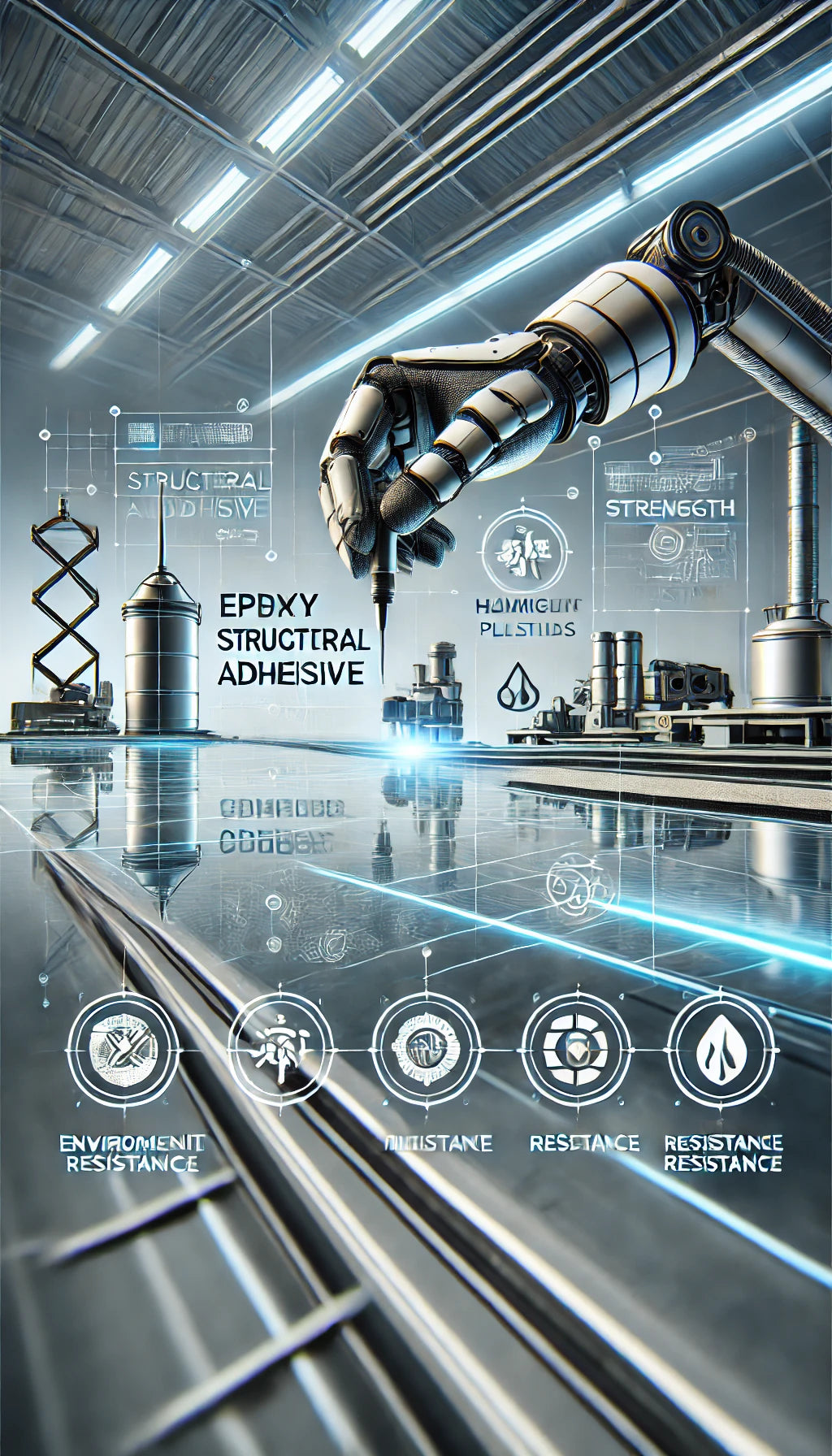Industry & Engineering
Structural Adhesive
A structural adhesive is designed to cure into a material capable of securely bonding two or more substrates, withstanding the forces encountered throughout the product's lifespan. Often referred to as "load-bearing" adhesives, they maintain their bond integrity under conditions such as shock, vibration, chemical exposure, temperature variations, and other potentially damaging factors. These substrates can vary widely, encompassing metals, plastics, glass, rubbers, ceramics, and composites. The adhesive must sustain constant or intermittent loads and shocks without compromising the bond.
Types of adhesives suitable for structural applications include epoxies, methacrylates, UV curing adhesives, polyurethanes, and cyanoacrylate adhesives (CAs).
While not typically classified as structural adhesives, other adhesive types can also perform structural roles. Pressure-sensitive adhesives, like those used in masking tapes and Post-it® notes, have successfully been employed in structural applications. Anaerobic adhesives, such as threadlockers, are primarily used to secure fasteners and are designed to be reversible upon disassembly. However, there are instances where anaerobic curing mechanisms have been adapted for structural bonding.
Sealants, which are primarily used to fill gaps and prevent liquid ingress or contamination, can also exhibit strong adhesion properties. Silicone sealants, for example, are well-regarded for their sealing capabilities but can also function as structural adhesives in specific applications, such as in the assembly of fish tanks.
This adaptation and versatility allow American Fairfield to offer a range of adhesive solutions that meet diverse structural bonding needs across various industries and applications.

Epoxy Adhesive
Wide Material Compatibility: Bonds effectively to metals, plastics, glass, ceramics, wood, engineered thermoplastics, and thermoset laminates like SMC and GRP.
High Strength Performance: Provides excellent tensile, compressive, and lap shear strength, ensuring durable load-bearing joints.
Versatile Applications: Ideal for auto body panel bonding and as an automotive structural adhesive due to its vibration-resistant and tough bond properties.
Environmental and Chemical Resistance: Resistant to thermal cycling, static discharge, galvanic corrosion, humidity, salt water, fungus, and harsh chemicals.
Electrical Insulation: Offers excellent electrical insulating characteristics, suitable for potting electronics and protecting against static discharge.
Application Flexibility: Smooth, non-sagging, and thixotropic consistency allows for easy vertical application and gap filling.
Mixing and Curing: Features a 1:1 mix ratio, with a 30-minute working time and a cure time of 48 hours at room temperature or 1.5 hours at elevated temperatures (65 °C / 149 °F).
Specialty Versions Available: Variants include flame retardant (9200FR), 1-part adhesive (9310), electrically conductive, and thermally conductive options.

Acrylic Adhesive
Strong Bonds Across Substrates: Acrylic adhesives form robust bonds between a wide range of materials including metals, plastics, and composites.
Rapid Strength Development: These adhesives offer fast curing times, ideal for applications requiring quick assembly.
Special Properties: Options include UV resistance, high temperature resistance, and flexibility to meet specific application needs.
Cost and Time Savings: Replace traditional methods like welding, reducing assembly time and labor costs by up to 50%.
Ease of Application: Available in liquid or paste forms, suitable for various application methods including automated dispensing.
Environmental Resistance: Acrylic adhesives are highly resistant to environmental factors such as moisture and chemicals.

Urethane Adhesive
Versatile Bonding: Bonds metals, plastics, SMC, FRP, laminates, stone, glass, ceramic, leather, fabric, foam, and wood.
Performance: Offers excellent impact resistance, high shear and peel strength, and good impact performance.
Quick Application: Fast gel time of 4 minutes at 25°C, with full cure in 24 hours at 25°C.
Temperature Range: Serviceable from -32 to 200°F (-40 to 93°C), suitable for diverse environmental conditions.
Form and Use: Beige liquid in a 3.5 g foil pouch, easy to apply by mixing parts A and B thoroughly.
Application Instructions: Dispense, mix thoroughly, and apply as per the Technical Data Sheet for optimal results.
Overview of Structural Adhesives
These structural adhesives offer versatile bonding capabilities across a wide array of materials, including metals, plastics, composites, ceramics, wood, and more. They provide exceptional performance with features like high impact resistance, strong shear and peel strength, and quick application times—gelling in just 4 minutes at 25°C and fully curing within 24 hours. With a service temperature range from -32 to 200°F (-40 to 93°C), they are suited for diverse environmental conditions. Available in liquid or paste forms, they cater to various application methods and offer special properties such as UV resistance, high temperature resistance, and flexibility, meeting specific needs across industries from automotive to electronics. These adhesives not only ensure robust bonds but also contribute to cost and time savings by replacing traditional assembly methods while offering excellent environmental and chemical resistance, electrical insulation, and ease of application across different substrates.
